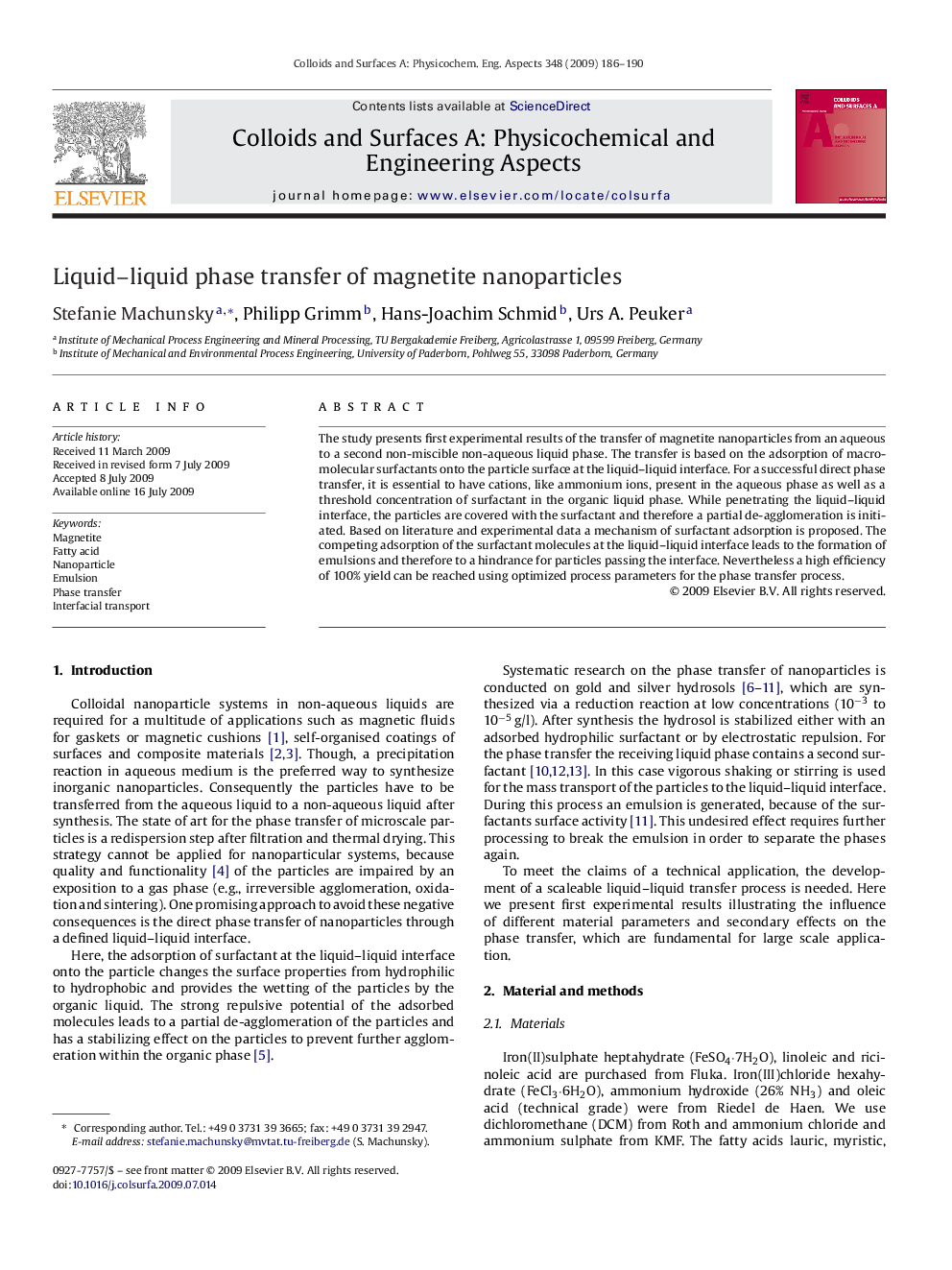| کد مقاله | کد نشریه | سال انتشار | مقاله انگلیسی | نسخه تمام متن |
|---|---|---|---|---|
| 595766 | 1454024 | 2009 | 5 صفحه PDF | دانلود رایگان |

The study presents first experimental results of the transfer of magnetite nanoparticles from an aqueous to a second non-miscible non-aqueous liquid phase. The transfer is based on the adsorption of macromolecular surfactants onto the particle surface at the liquid–liquid interface. For a successful direct phase transfer, it is essential to have cations, like ammonium ions, present in the aqueous phase as well as a threshold concentration of surfactant in the organic liquid phase. While penetrating the liquid–liquid interface, the particles are covered with the surfactant and therefore a partial de-agglomeration is initiated. Based on literature and experimental data a mechanism of surfactant adsorption is proposed. The competing adsorption of the surfactant molecules at the liquid–liquid interface leads to the formation of emulsions and therefore to a hindrance for particles passing the interface. Nevertheless a high efficiency of 100% yield can be reached using optimized process parameters for the phase transfer process.
Journal: Colloids and Surfaces A: Physicochemical and Engineering Aspects - Volume 348, Issues 1–3, 20 September 2009, Pages 186–190